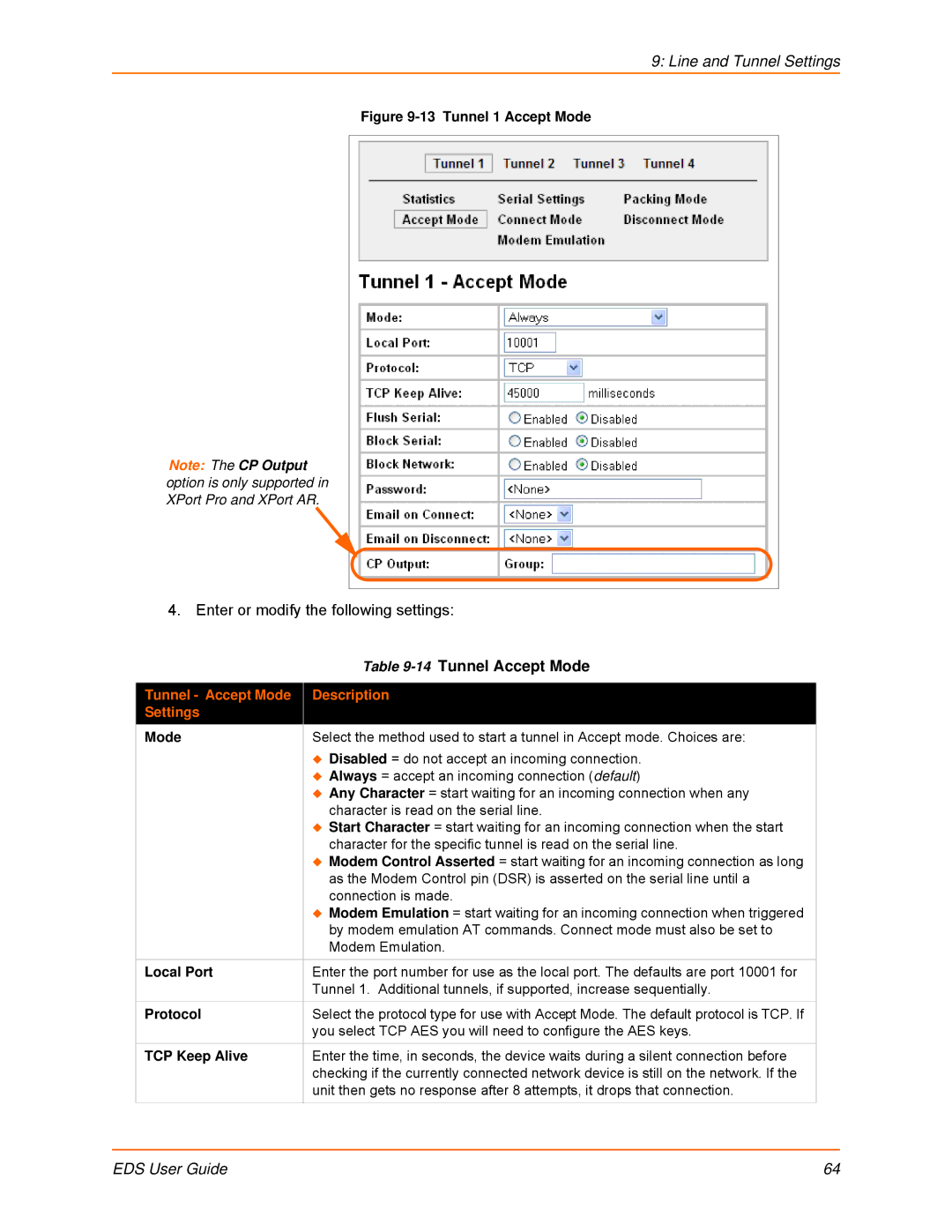
9: Line and Tunnel Settings
Figure 9-13 Tunnel 1 Accept Mode
Note: The CP Output option is only supported in XPort Pro and XPort AR.
4. Enter or modify the following settings:
| Table |
|
|
Tunnel - Accept Mode | Description |
Settings |
|
Mode | Select the method used to start a tunnel in Accept mode. Choices are: |
| Disabled = do not accept an incoming connection. |
| Always = accept an incoming connection (default) |
| Any Character = start waiting for an incoming connection when any |
| character is read on the serial line. |
| Start Character = start waiting for an incoming connection when the start |
| character for the specific tunnel is read on the serial line. |
| Modem Control Asserted = start waiting for an incoming connection as long |
| as the Modem Control pin (DSR) is asserted on the serial line until a |
| connection is made. |
| Modem Emulation = start waiting for an incoming connection when triggered |
| by modem emulation AT commands. Connect mode must also be set to |
| Modem Emulation. |
|
|
Local Port | Enter the port number for use as the local port. The defaults are port 10001 for |
| Tunnel 1. Additional tunnels, if supported, increase sequentially. |
Protocol | Select the protocol type for use with Accept Mode. The default protocol is TCP. If |
| you select TCP AES you will need to configure the AES keys. |
TCP Keep Alive | Enter the time, in seconds, the device waits during a silent connection before |
| checking if the currently connected network device is still on the network. If the |
| unit then gets no response after 8 attempts, it drops that connection. |
|
|
EDS User Guide | 64 |
